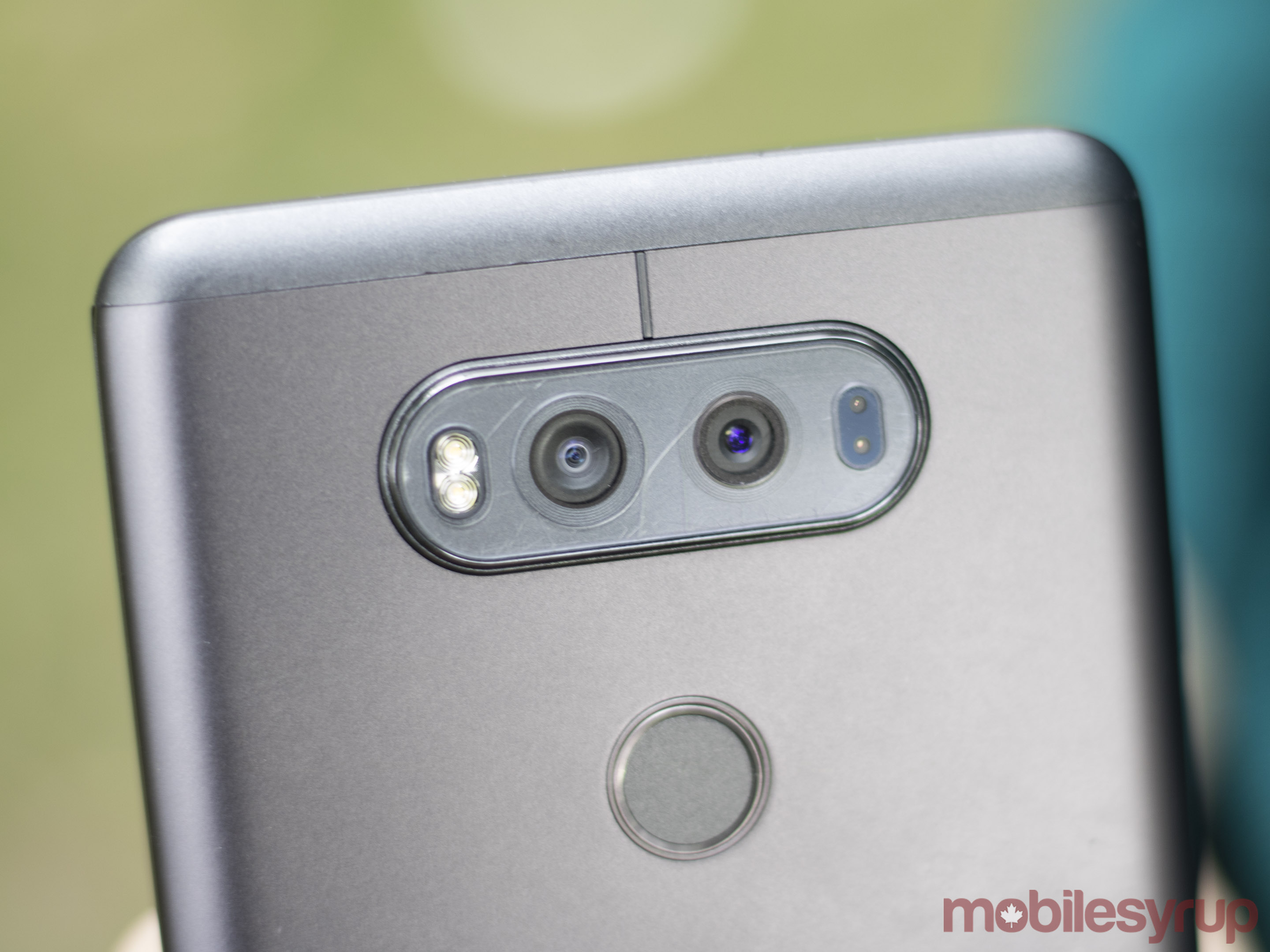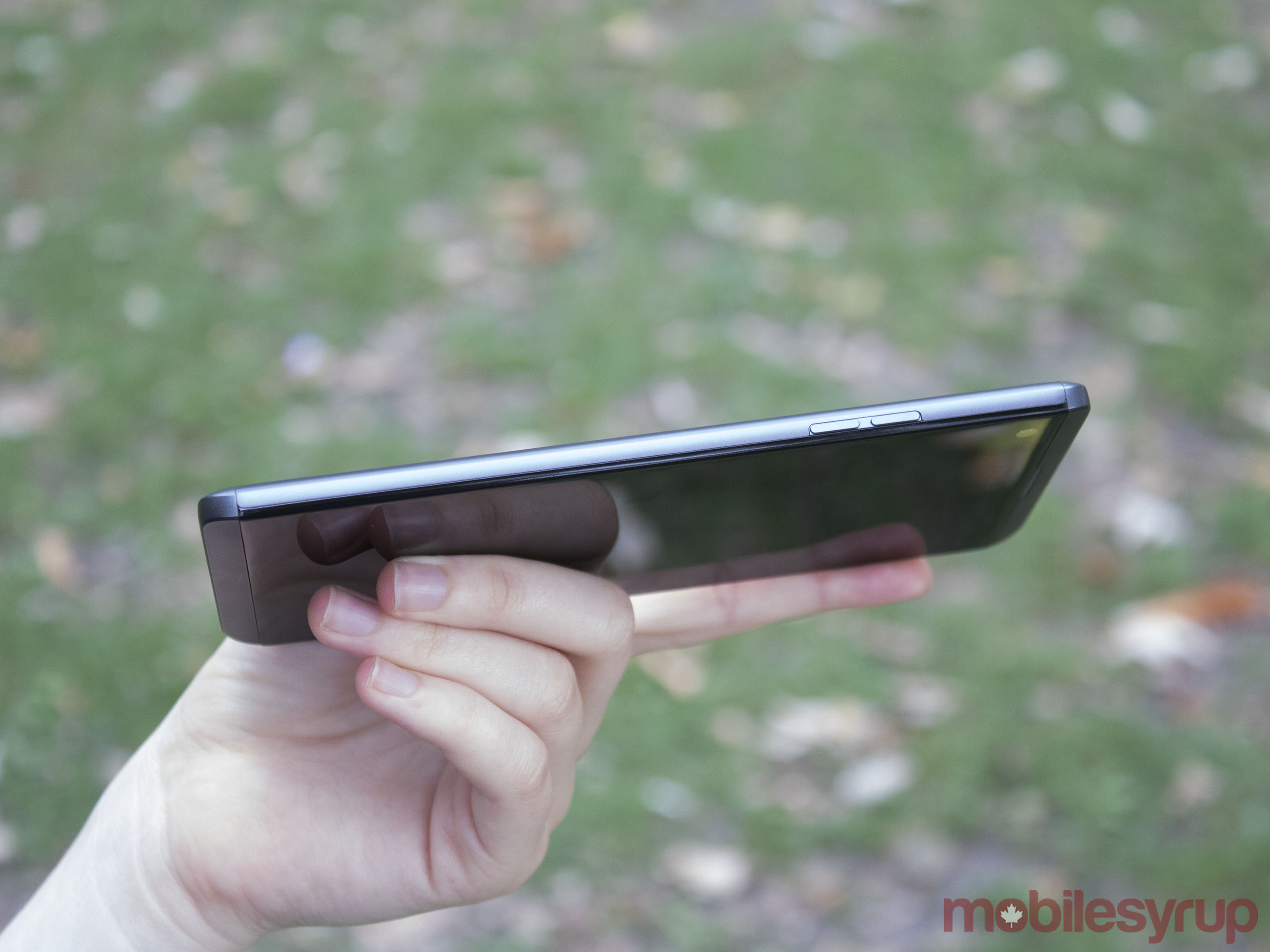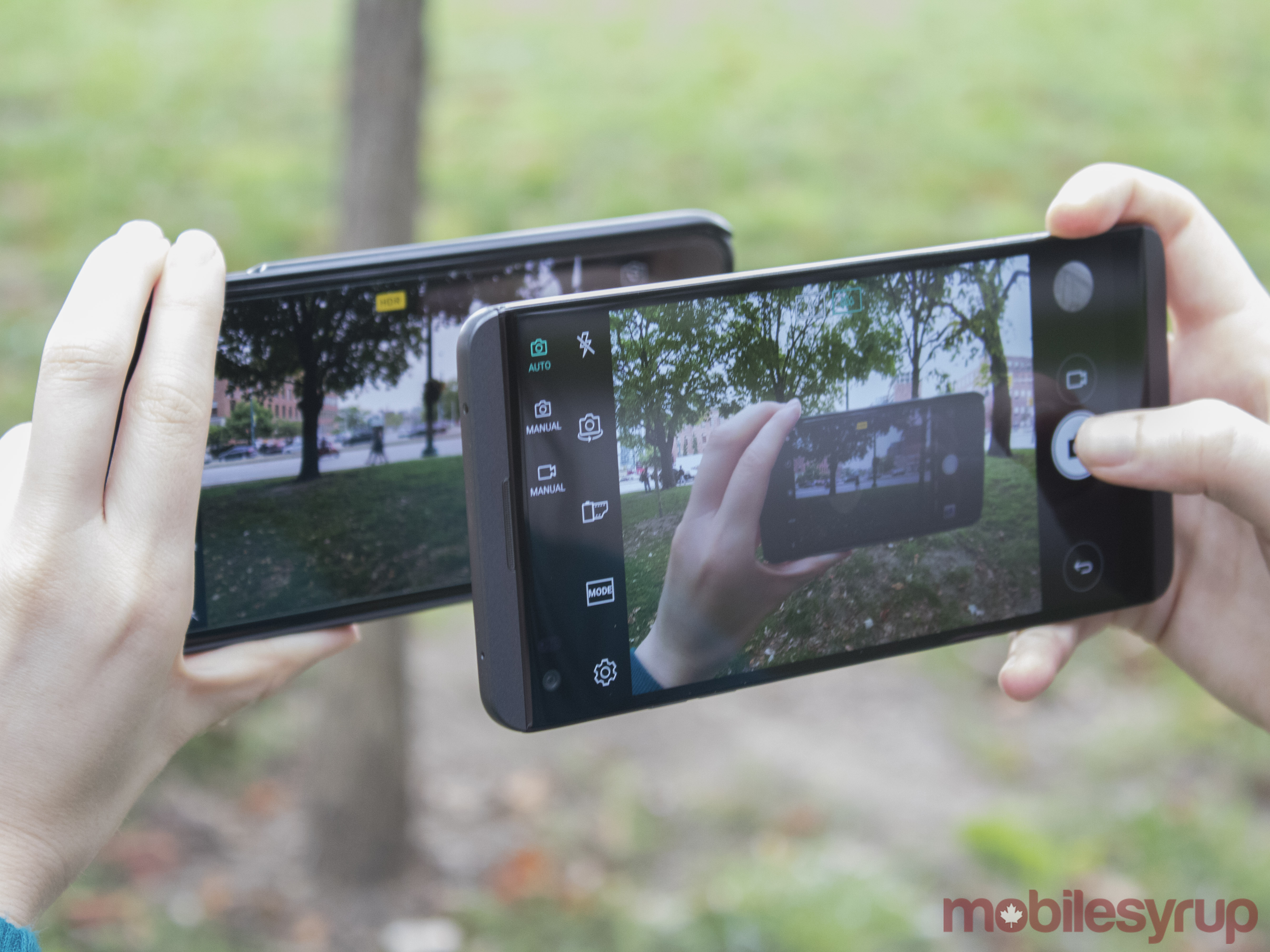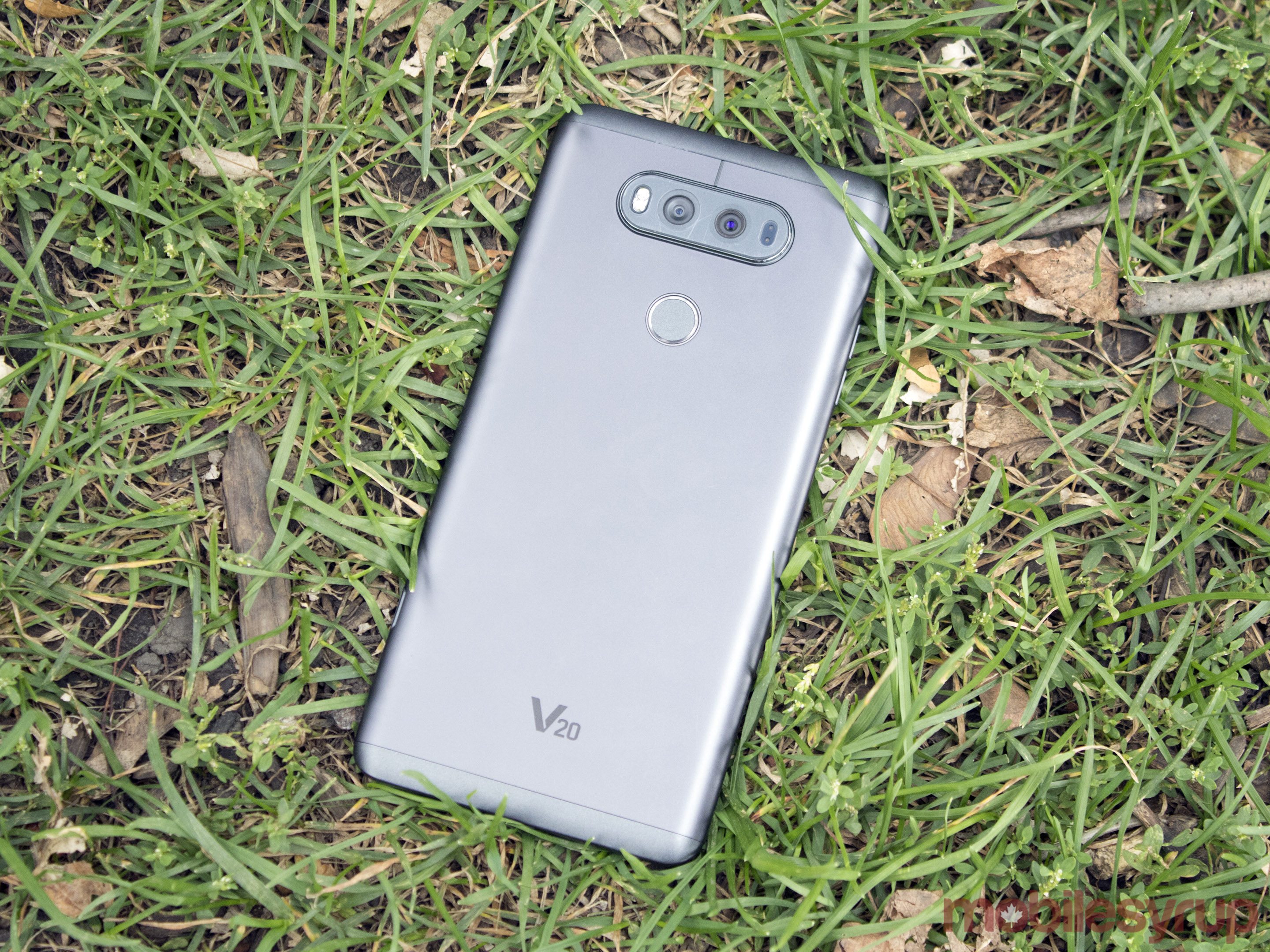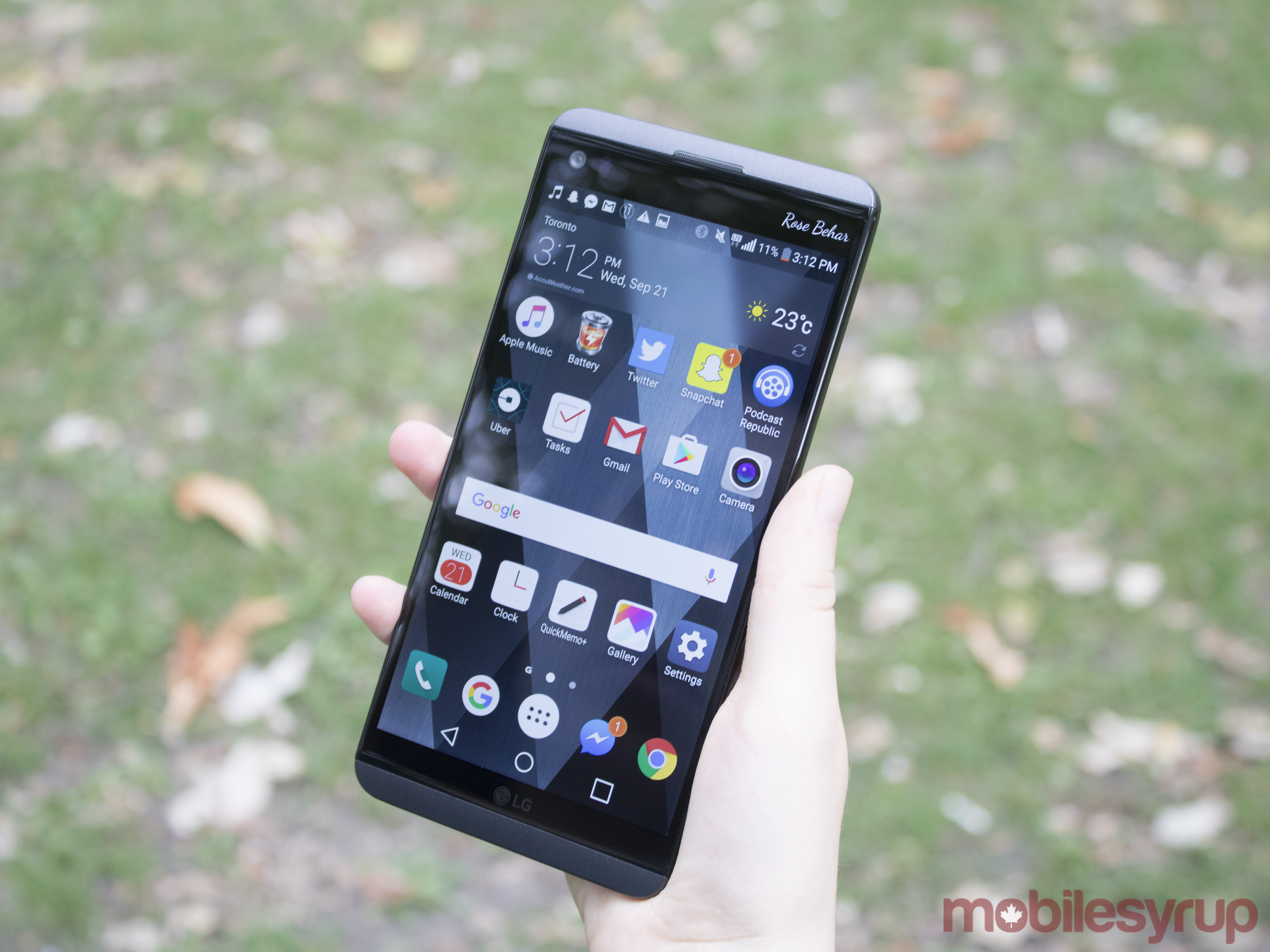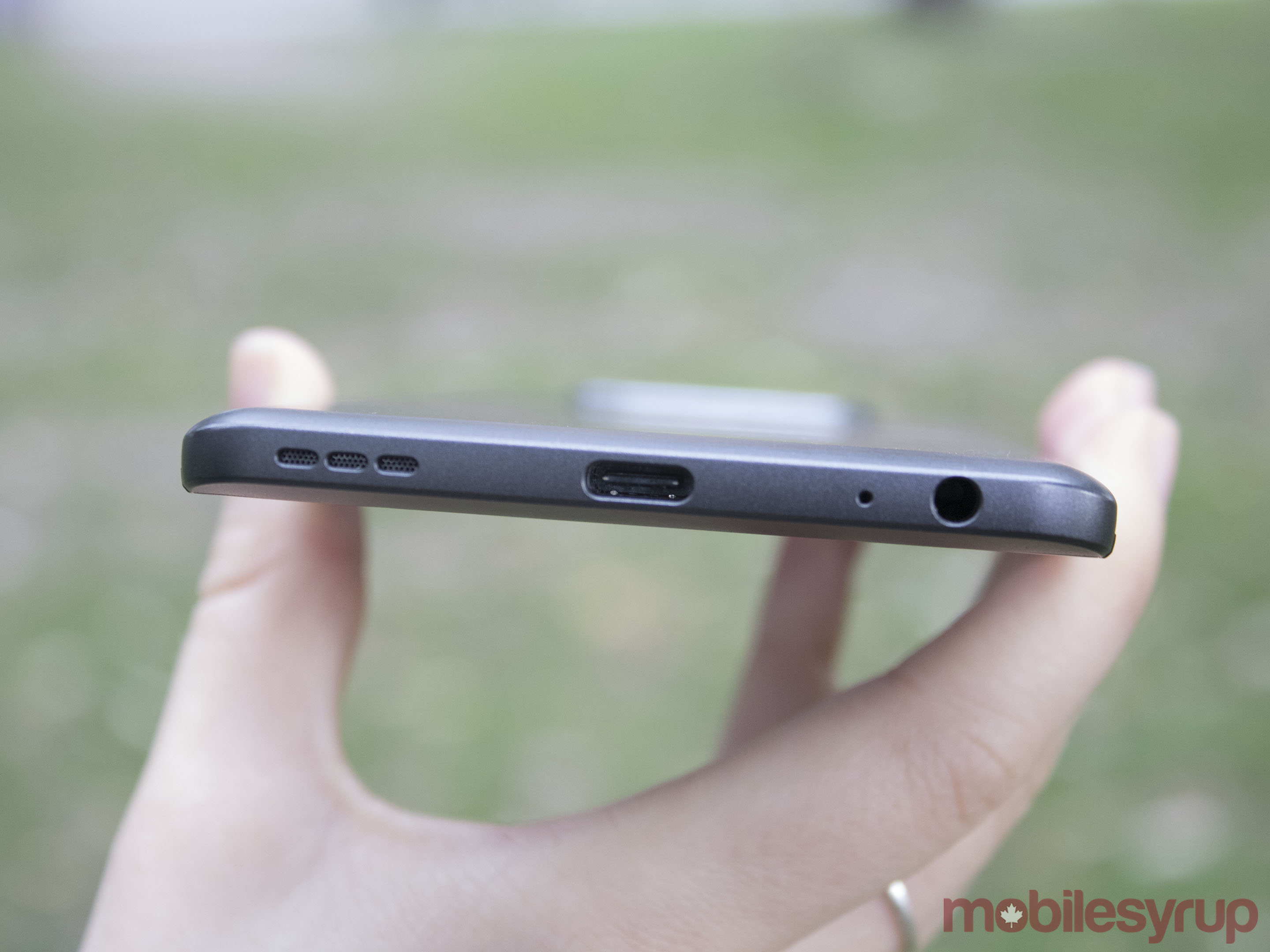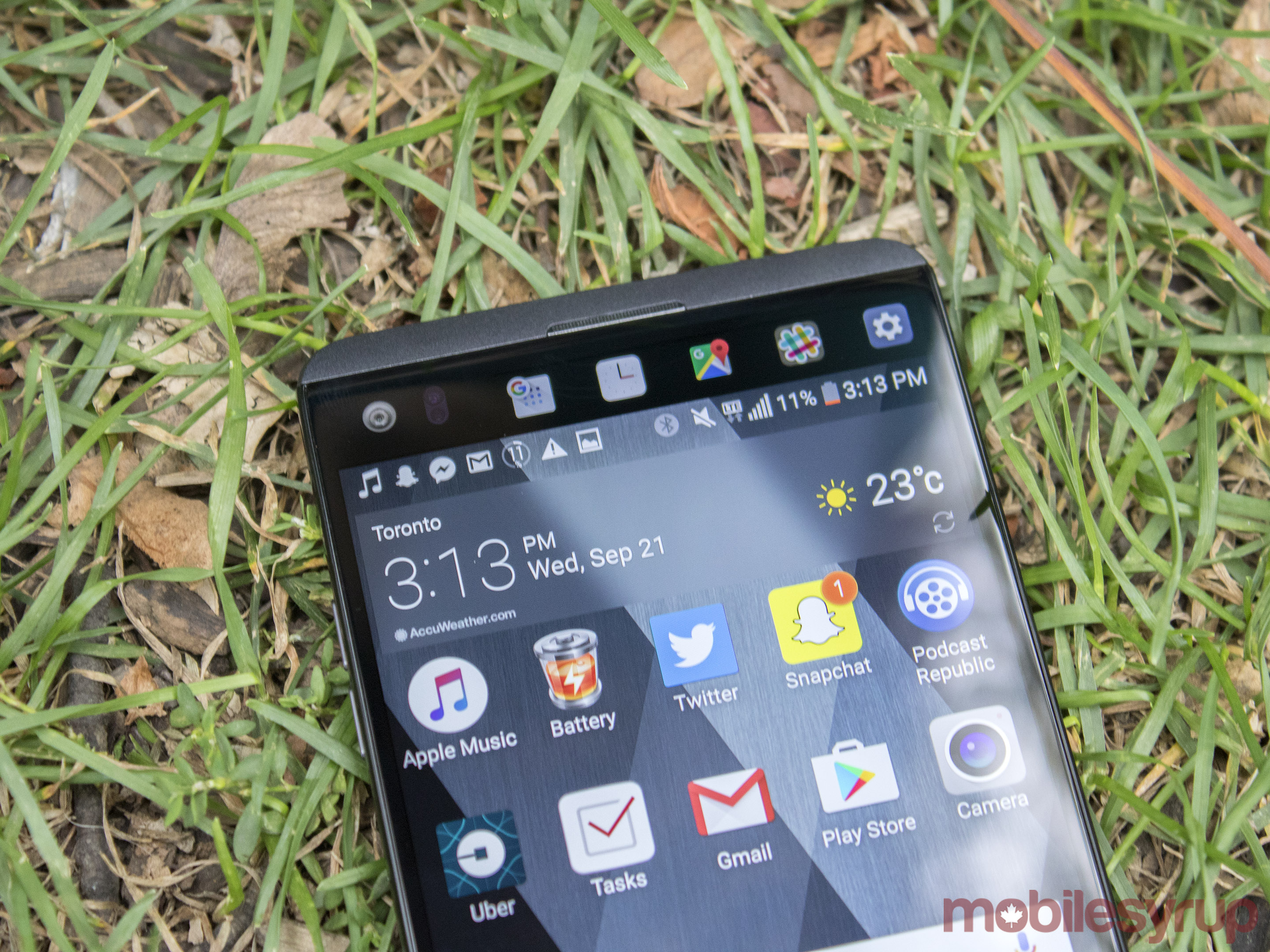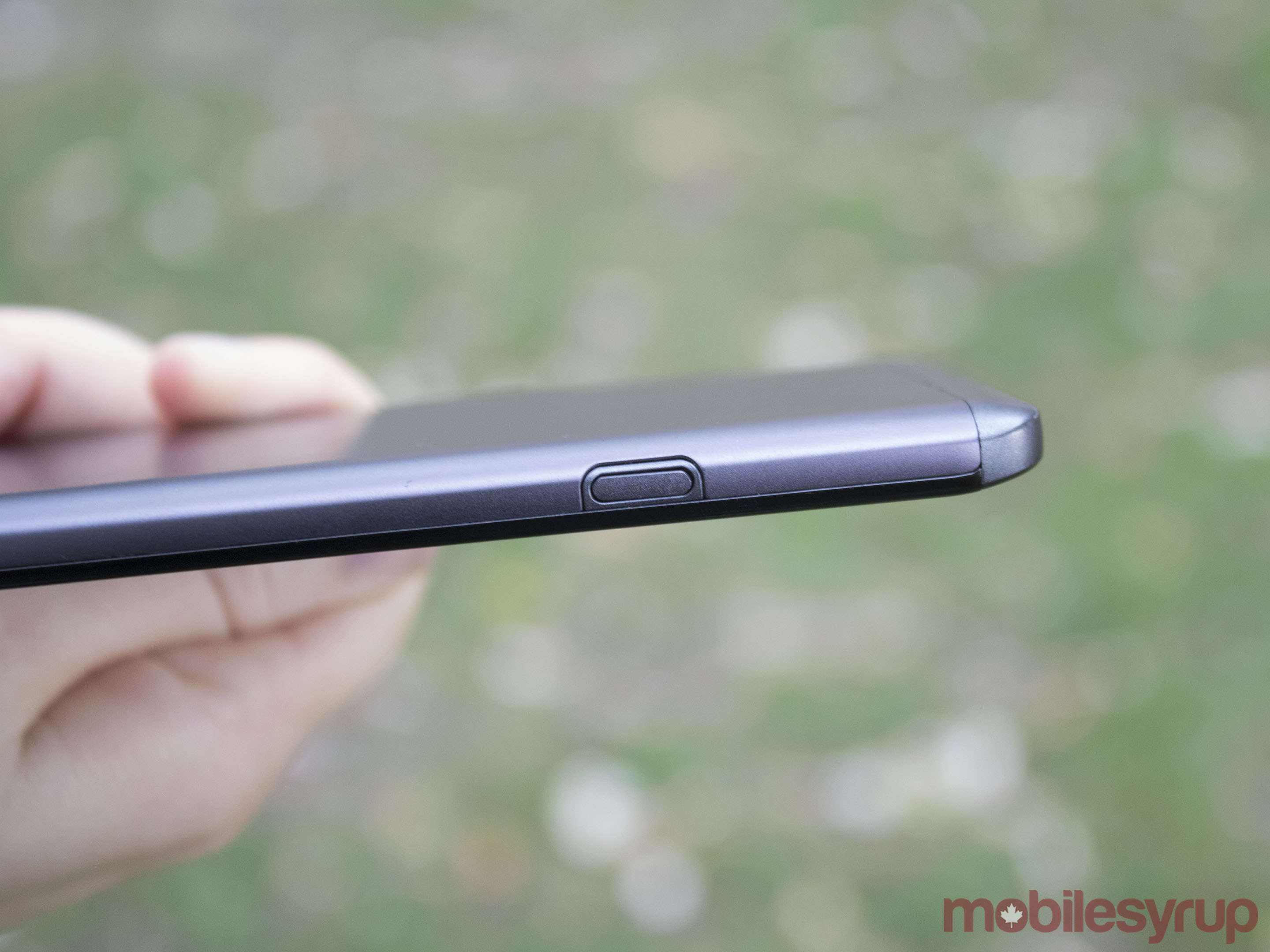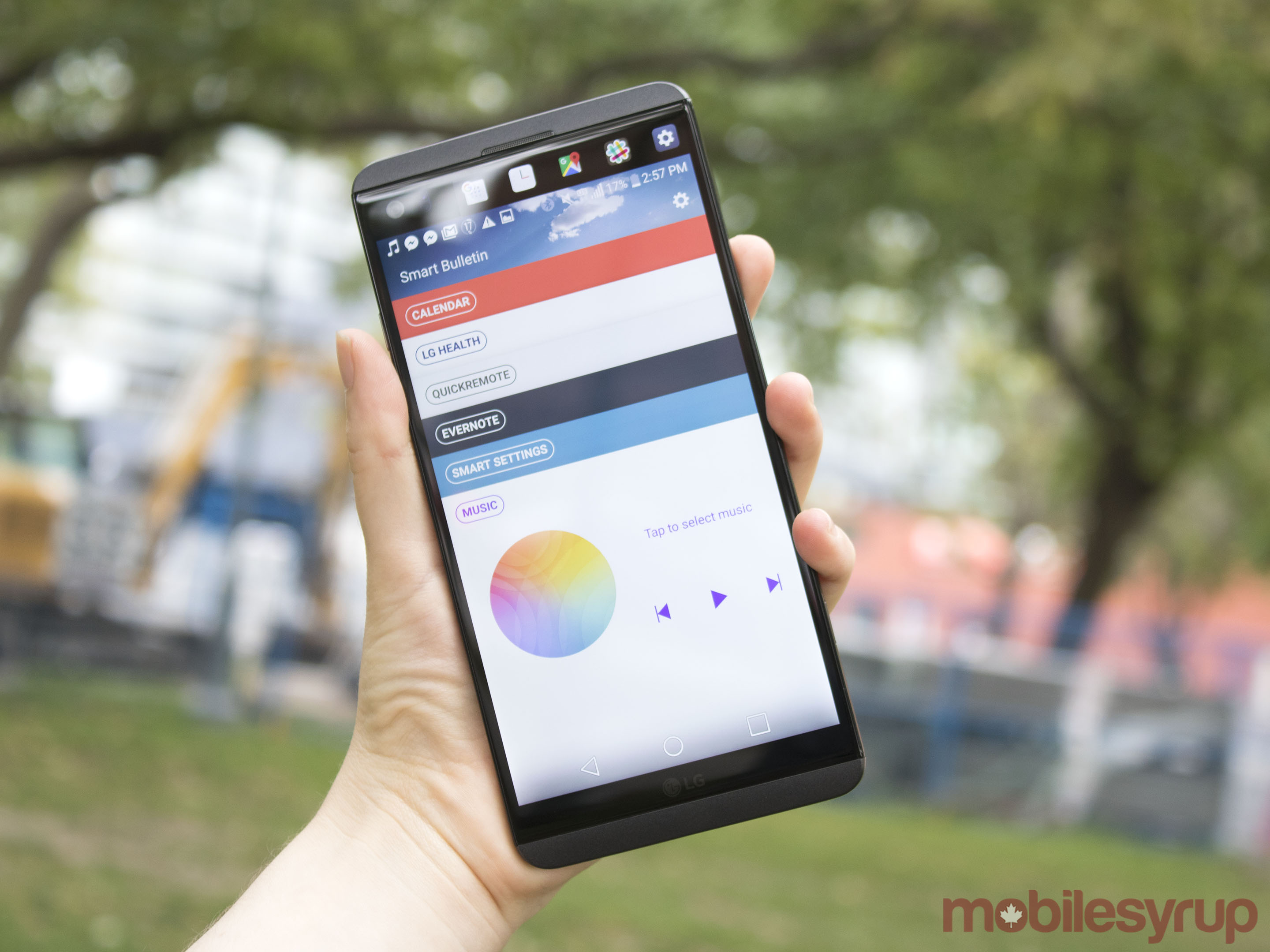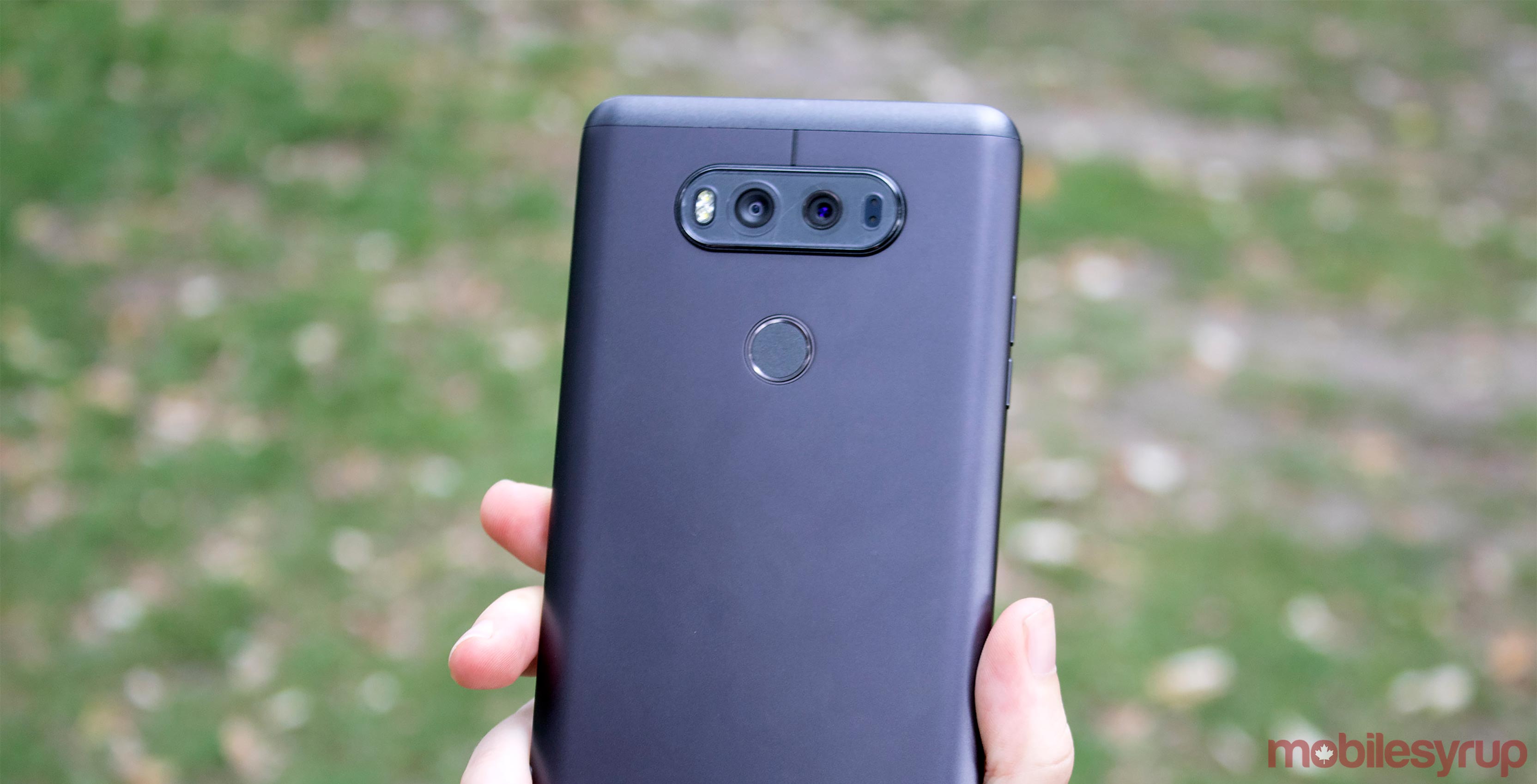
The Pros
- Useful secondary display and vibrant main display
- Premium design
- Impressive wide-angle dual-camera setup
- Groundbreaking audio experience
The Cons
- Inconsistent performance for camera & other large apps
- Slow boot time
- Not waterproof
- Tendency to slightly overheat
This is it. LG’s big opportunity.
With the iPhone 7 deemed unimaginative by many and Samsung’s popular Note 7 recalled for battery explosion issues, this could be the perfect moment for LG to take to the mobile world by storm with a capable, well-designed premium device.
Thankfully for the company, the timing is right and it has the perfect handset to offer — at least on paper.
The LG V20, the company’s latest smartphone release, demands attention by claiming to be the ultimate multimedia phone, stocking the world’s first 32-bit Hi-Fi digital-to-analog converter (DAC) in a mobile handset and two rear-facing cameras. The former takes aim at an improved wired headphone experience, while the latter provides super wide-angle shots.
Additionally, the phone features a secondary display in the form of an always-on ticker above the main display — exactly the kind of frill that those enticed by Samsung’s sloped edges or Apple’s generally cutting-edge design might enjoy. Americans have already had the chance to become accustomed to this feature with the V10, but for Canadians, it’ll be brand new, as the V20’s predecessor never made it here.
But while all this sounds like it may lead to a 2016 LG comeback tour, there is one essential question keening for an answer: can the device stand under the weight of its own expectations and perform?
I spent two weeks, and used two pre-production versions of the handset, to find out.
Specs
- Quad-core (2×2.15 GHz Kryo & 2×1.6 GHz Kro) Qualcomm Snapdragon 820 CPU
- Adreno 530 GPU
- 4GB RAM
- 64GB internal storage with up to 2TB of expandable UFS ROM/microSD storage
- Android 7.0 Nougat
- 5.7-inch QHD IPS Quantum display 2560 x 1440 pixels resolution, 513 ppi
- Secondary display: IPS Quantum display 160 x 1040 pixel resolution, 513 ppi
- 7 x 78.1 x 7.7mm
- 174 grams
- 16 megapixel rear camera with f/1.8 aperture and OIS (75-degree lens), as well as 8-megapixel rear camera with f/2.4 aperture (135-degree lens)
- 5-megapixel front camera with f/1.9 aperture (120-degree lens)
- Removable 3,200 mAh battery with Qualcomm Quick Charge 3.0
- USB Type-C
- 32-bit Hi-Fi Quad DAC
- Rear finger print scanner
Unsteady footing
One of the main selling points of the LG V20 is its dual rear-facing camera setup.
The pair features a 16 megapixel shooter with a f/1.8 aperture, optical image stabilization (OIS) and a 75-degree lens, as well as an 8 megapixel shooter with a f/2.4 aperture and 135-degree lenses respectively.
The camera setup also makes use of 2x optical zoom and hybrid auto-focus (which integrates laser detection, phase detection and contrast auto focus). Together, the duo is capable of taking professional-grade photos.
However, the conditions need to be right. I found that in mid to low light, the photos suffered from blur and a granulated appearance, at least while auto shooting — though, overall, the low-light shooting still operates at a fairly high-level for a mobile device. While definition might be soft, it’s possible to take intelligible snaps even in a darkened bar.
Much more impressive is the wide angle feature. It provides unique and interesting photos with a slight fish-eye look that give you the extremely satisfying feeling of fully capturing all that you can see. In fact, it’s actually capable of capturing more than you can see.
Unfortunately, the camera package that was meant to be one of the leading aspects of this phone also brought with it an unsettling bug that plagued much of my time with the phone. The camera app on my handset had a tendency to crash — a lot.
Obviously, this isn’t ideal. So much of a camera’s usefulness is down to how quickly it can launch and shoot. A full shut down is a setback that could easily cause you to miss that magic moment.
There are a few things to note here, though. The first is that other reviewers that used pre-production models of the LG V20 didn’t seem to experience this malfunction.
The second is that it was not a consistent issue. There were sessions with the camera in which it crashed repeatedly, at almost every open, and there were sessions when try as I might I could not make it crash.
Lastly, it’s important to remember, of course, that it’s a pre-production device, which means a fix can and hopefully will be found before units hit the shelves.
Having said all that, LG was still confident enough in these devices to send them out to reviewers, so I consider it only fair to make mention of a bug that seriously affected my enjoyment of the camera.
Wanting to get to the bottom of things, I explored the crash error using logcat. It pointed towards an issue between the LG camera app and what appeared to be the Android media server. Beyond this, I wasn’t able to deduce much.
I reached out to LG and they notified me that they believed they had a software update that would fix the issue, which they would deliver with a new handset. I have only tested the new handset for mere hours, and the issue seems to be resolved, but I will update this article if the problem returns.
While this aspect of the camera was disappointing, when it worked there was much to be impressed by. For instance, the device takes astounding 4K video. With the help of Qualcomm’s development, the V20 offers electronic image stabilization (EIS) 3.0 technology that the company says reduces sync latency to 50 milliseconds. This means your shaky hands are a lot less likely to ruin a video. If you take the experiment to its furthest extent and shake your hands intensely, it does look a bit strange — like something in your video is moving, not the camera — but it’s still more professional than the alternative.
To round out the camera package, there’s the 5 megapixel front-facing camera, with its 120-degree lens and f/1.9 aperture. I appreciated the ability to take wide-angle selfies, which helped me get a shot with all my theoretical friends.
Looks good up close
Despite being a little hefty and large in size, the V20 somehow manages to feel just right in the hand. When I first picked it up, in fact, I noted that it felt light. In fact, it comes in at a sturdy 174 grams — which is in the middle between the iPhone 7 Plus’ 188 grams and the Note 7’s 169 grams. It is, however, longer and wider than both, so perhaps that contributed to an overall feeling of well-proportioned balance.
Adding to this experience is the matte metal body. It feels premium, and has a minimal, elegant look that I love, though it must be said that my co-workers had a very different reaction upon seeing the first photos of the device. One stated that it looked plastic and cheap from afar. Their mind changed, however, when they got a chance to actually hold it.
As for the more practical elements of the design, the V20 has a rear-facing fingerprint sensor, which is positioned slightly high for those with small hands. On the bottom, there’s a USB-C port for charging, a grill for the main speaker and a 3.5 mm headphone jack. There is also a prominent camera bump at the back, holding the device’s dual camera setup.
One design feature that makes the V20 unique in the premium handset space is the fact that its metal back is easily removable by pressing a small button on the side. This reveals a consumer-friendly removable battery and the SIM and microSD card slot. A minor irritant is that the phone is not dual SIM, and it’s a bit of a hassle to swap out SIMs, considering you must first take out the battery. Another notable downside of this configuration is that the phone is not water resistant.
Additionally, like any beautiful metal body, it often feels hot — even if the actual temperature of the device is not unreasonably high.
Double the fun
The arrival of the V20 in Canada marks the debut of LG’s ‘secondary display’ in the country. I was unsure of the feature at first, feeling it was perhaps just a tweaked version of Samsung’s Edge (which I’ve never found useful). However, I ended up finding it extremely convenient.
The secondary display has three sections. One features five quick tools, which can include sound profile, camera, flashlight and Wi-Fi. Another holds five apps, which can be anything downloaded on your phone, and can be quickly shuffled simply by holding and dragging them down from the secondary display, on to the main display or vice versa. The last section features your name in stylized font, and rolling notifications. For those who are certain they won’t like the secondary display regardless of its features, rest assured that it can be switched off if desired.
As for the main 5.7-inch QHD IPS 1440 x 2560-pixel quantum display, it’s bright and richly coloured, adding to a premium look that puts it in contention with the top devices on the market now. For instance, the Note 7’s screen is also 1440 x 2560 pixels, while the iPhone 7 Plus has an IPS LCD screen that runs 1080 x 1920 pixel.
The Note 7, however, is Super AMOLED, allowing it to execute its secondary display differently. While the V20’s secondary display must actually be separate, the Note 7’s can simply turn off certain pixels and keep others on. As interesting as that sounds, in my opinion the V20’s system simply works faster and better.
Almost there…
The handset runs a pretty standard configuration for a 2016 high-end flagship device. Built within the phone is a Snapdragon 820 chipset, 4GB of RAM, 64GB of internal storage (expandable up to 2TB) and support for X12 LTE.
In theory, this should be more than enough to let the V20 handle the majority of computing tasks – and much of the time, it was snappy and worked superbly. At other points, however, the phone struggled with tasks that should have been easy. Google Maps and Apple Music, in particular, would crash even when the phone wasn’t carrying a heavy load of open apps. Apple Music, interestingly enough, also seems to operate using the media server mentioned in the camera section above.
This issue seemed to be fixed upon testing the new, software updated LG V20 provided to me but I still found the performance to be slightly laggy when it comes to heavy processing apps. Again, I’ll be sure to update if the apps begin quitting once more.
The device also takes an unusually long time to boot up – about 25 seconds to a screen where you must enter your PIN, and 35 seconds to fully booted and operational. I tested the Note 7 and iPhone 7 in comparison, and the former took a little over 30 seconds, while the latter was up and running at about 20 seconds. This issue was unchanged with the arrival of the new pre-production model.
Similarly, the phone sometimes took more than one second to turn on from locked, giving the device a very sluggish feeling.
My other main issue with the handset’s performance was a semi-frequent false rejection rate from the fingerprint sensor, along with some periods of complete unresponsiveness. This too seemed repaired with the new device.
Pitch perfect
Another large selling point for the V20 is its audio experience. The device stocks the mobile world’s first 32-bit Hi-Fi DAC, which provides excellent quality sound through wired headphones. For reference, I used my Bose QC15 set.
While the quality is certainly better than on any other smartphone I’ve come across – articulated and deep – I will also note that for non-audiophiles, the improvement over other high-end phones will be difficult to notice and appreciate, at least at first. Once your ears get used to the quality of sound coming from the V20, however, going back to another Android and iOS device is disappointing. They just can’t measure up.
The device’s exterior speaker performed well, managing to play sounds at top volume without coming off tinny, though the experience would’ve been improved had the speaker been front-facing and not situated at the base, where it could be easily muffled.
Once again, as has been my experience with many recent Android devices, it was difficult to reliably hear people when taking calls, forcing me to don my headphones in any location that wasn’t silent.
The HD 24-bit audio recording is magnificent. Three AOP microphones ensure a professional level sound recording that brings voices to the forefront, but can also pick up beautifully articulated background noise when taking atmospheric videos.
Removable battery for the win
The phone has a 3,200 mAh battery which all in all performed well. With my moderate to heavy use — about two hours of data browsing, four of Wi-Fi browsing, 30 minutes of calling and up to five hours of Wi-Fi music streaming — I was able to eke out a day and a half of up time on average from the handset, occasionally two full days.
Charging was also impressively swift. One session saw the device charge in an hour and ten minutes, while the average seemed to be about an hour and a half. Another large benefit is the fact that the battery is removable, making it easy to replace if and when it burns out.
Unfortunately, it might not take long for the battery to degrade, as heat, the natural enemy of strong battery life, was an issue. The device peaked at 46 degrees Celsius while charging, and frequently spiked to around 40 degrees. The flaw can be fixed with the purchase of a new battery, admittedly, but you’ll likely have to spend a few dollars to do so.
Not quite stock
The fact that the LG V20 will likely be the first device to ship to Canada preloaded with Android 7.0 Nougat is a big benefit, but LG’s UX 5.0+ skin is far from stock Android. Having said that, with a little tweaking, you can get it fairly close — if that’s the sort of thing that matters to you.
For instance, the phone comes out of the box without an app drawer, and you’ll have to get into settings to download it. Additionally, though it comes preloaded with Google Now (and is also the first phone to feature Google’s in-app search function), you won’t be able to get to it by swiping right on your screen. Instead, you can enable an LG stand-in for the service in settings, which it calls Smart Bulletin. The feature is understandable a lot more limited than Google Now, but still useful.
Though the skin seemed strange to me at first, after customizing it I came to mostly enjoy the user experience. There were many other small features I found useful, as well, including a quick setting for ‘Mini View,’ which shrinks the display to allow for one-handed use and the ability to knock twice on the screen to wake it up.
It makes sense to compare the V20 against Samsung’s Note 7. Both are premium, plus-sized Androids. What’s interesting is that from the start LG seems to have set its sights on the iPhone, as well. From launching a day before the iPhone 7 was announced, to using iPhone 6S’ prominently in their comparisons during the unveiling event, LG seems to be making a strong statement about its most recent flagship: that this is a world-class device capable of drawing in even long-time Apple fans.
So how does it compare to the other two top-tier contenders?
Design-wise, well. It’s lighter than the iPhone 7 Plus, and has a larger display by .2 inches, though it is also wider. It’s thinner than the Note 7, and less of a fingerprint magnet due to its matte metal body, though some will say the fact that it can be mistaken for plastic is a major design detractor. To me, the biggest flaw is that its competitors are waterproof, while the V20 makes no such claim.
The battery life is comparable with the added bonus of removability, while the audio surpasses what’s on offer with the iPhone 7 Plus and Note 7. The camera also compares well, with its wide-angle shooting abilities – yet it’s tendency to crash makes me hesitant to fully recommend it.
The same question arises when it comes to performance. Generally, it worked just as quickly as the Note 7 and iPhone 7, and the specs are comparable — the Note 7 features a Snapdragon 820 processor with 4GB of Ram, and the iPhone 7 Plus has an Apple A10 Fusion processor backed up by 3GB of RAM. The inconsistent performance, however, truly degraded the experience.
Can it compete?
The LG V20 is in many ways an amazing phone. It has everything it needs -- premium design, fantastic camera, leading audio quality and even an interesting future-forward always-on display feature. However, even if my experience with the camera bug is set aside, its inconsistent processing performance (including painfully slow boot time) likely mean that this isn’t the device will catapult LG into Samsung and Apple’s realm. Those aren’t gigantic issues by a long shot, but when it comes to operating at the level of those powerhouses, they matter.
However, depending on the price, which hasn’t been released yet, and under the hope that the bugs I experienced will be fixed, it would be easy to recommend this as a boundary-pushing device with much to offer a tech-savvy Android power-user.
As mentioned above, the two devices I review were pre-production units. Once MobileSyrup receives a production unit, we will update our review accordingly.
"The LG V20 is in many ways an amazing phone. It has everything it needs - premium design, fantastic camera, leading audio quality and even an interesting future-forward always-on display feature"
MobileSyrup may earn a commission from purchases made via our links, which helps fund the journalism we provide free on our website. These links do not influence our editorial content. Support us here.

